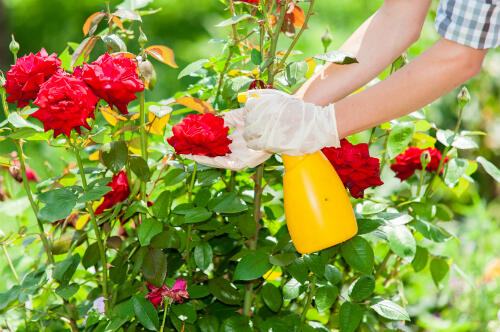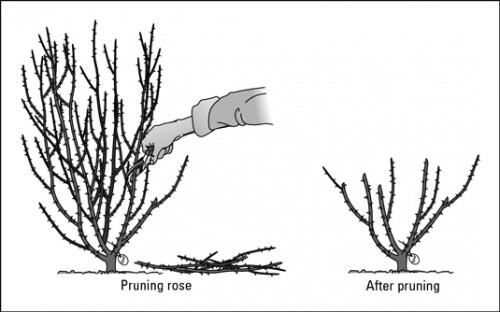Roses are difficult to take care of, many say. However, there are some ways where you can take care of your roses to keep them in the brightest and most beautiful shape. This is how to keep your roses growing in a healthy way:
The day you plant the roses, refresh the roots in a bucket of water while you dig the planting hole. An hour-long soaking plumps up shriveled roots.
After that, you should Clip off damaged roots. Shorten roots that are too long to fit in the planting hole without bending.
Some rose sellers trim the stems, or canes, for you. More likely, you’ll need to prune them yourself. Remove the broken ends of canes, canes with blackened or diseased spots, and twiggy growth.
Leave three to five sturdy canes in an open-centered arrangement. Cut back any extra-long canes so all are about the same length. Don’t worry about making a pruning mistake; it’s hard to go wrong.
Timing is crucial for bare-root planting: in most areas bare-root roses should be planted in early spring before their leaves unfurl; where temperatures rarely dip below 20 degrees, winter planting is best.
If you can’t plant a bare-root rose right away, keep its roots moist and cool. An alternative to bare-root roses — container-grown or “potted” roses — can be planted any time they’re available. Potted roses are a convenient way to extend the planting season.
Fertilizing roses
Use an all-purpose garden fertilizer, because it has balanced amounts of nitrogen, phosphorus, and potassium. Fertilizers touted especially for roses, such as Rose Food, are fine but not mandatory. In spring, as the plant emerges from dormancy, you can water with a tablespoon of Epsom salt (magnesium sulfate) dissolved in a gallon of water to promote strong canes.
Always water before applying fertilizer so the plant is plumped up and under no stress.
-
Here’s stuff you can cut out any time you see it:
-
Dead wood: Remove dead canes down to the ground level.
-
Damaged wood: Cut it back into about 1 inch of healthy wood.
-
Misplaced stems: Take off stems that are rubbing together (choose one and spare the other), stems that are taking off in the wrong direction, and stems that are trailing on the ground.
-
Suckers: In a grafted plant, these errant canes emerge from below the graft union (the bulge at the base of the bush). The suckers look different from the rest of the bush — they’re often smoother, straighter, and lighter in color. Another clue: They sprout leaves and occasionally mongrel flowers that look nothing like the main bush.
-
Experts advise cutting 1/4 inch above a bud eye so the bud eye doesn’t dry out.
Tell us how you take care of your roses. Mention @greenareaen and Follow us on Twitter.













